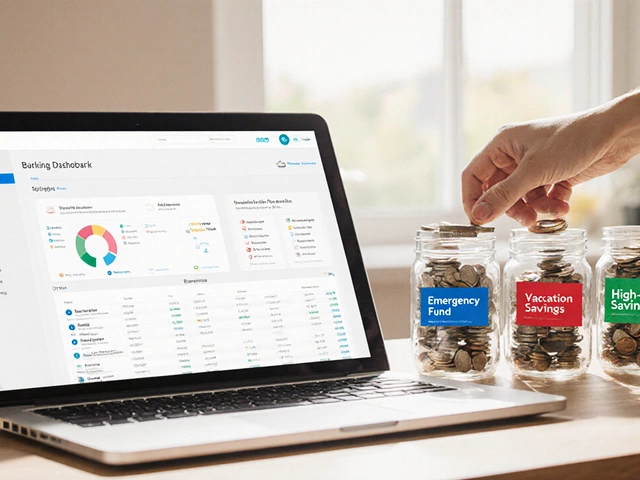
Filing GST sounds complicated, but it really doesn’t have to be a big headache. If you’re running a business, you already know that GST—Goods and Services Tax—has turned tax filing into a more organized (and sometimes demanding) job for everyone. But honestly, once you understand the order of steps, it gets a lot easier.
Before you even think about logging onto the portal, make sure you’ve got your basics sorted out. Do you have your GSTIN number? Are your sales and purchase records up-to-date and double-checked? Miss one small bit and the whole process can feel overwhelming.
Here’s a tip: plenty of small businesses still end up with late fees just because they forget a deadline—GST returns are usually monthly or quarterly, depending on your business size. Mark the due dates on your calendar and set a digital reminder. It’s way less stressful than dealing with penalties later.
- Getting GST-Ready: What You Need First
- Step-by-Step Guide to GST Filing
- Winning Tips for Hassle-Free Filing
- Common Mistakes and How to Dodge Them
Getting GST-Ready: What You Need First
You can’t jump into GST filing without some prep. If you skip setting things up, the filing process can get messy really fast. Here’s what you have to sort out before you jump into any online portal.
- GST Registration: If your business turnover crosses ₹40 lakh for goods or ₹20 lakh for services (as of April 2024), you have to register for GST. For some states in the North East, the limit is lower.
- GSTIN: Once you register, you’ll get a GST Identification Number. This 15-digit code is how the tax department keeps track of your business.
- Digital Signature Certificate (DSC): Companies and LLPs need this to sign returns online. Proprietors may not need it, but it’s handy if you run a big operation.
- Updated Sales and Purchase Records: Track all invoices, credit and debit notes. Every little detail counts—date, value, GST rate. There’s no room for guesses here.
- Bank Account Details: The business bank account you use for all money in and out related to GST transactions. The GST portal sometimes asks for details to match with your data.
- Access to GST Portal: You’ll need a reliable internet connection, your login ID, and password for the GST website (www.gst.gov.in).
If you’re managing more than one GSTIN for different branches, keep all that info handy and sorted out.
Here’s a quick look at key GST readiness data in India:
| Item | Details (as of 2024) |
|---|---|
| Threshold for GST Registration | ₹40 lakh (goods), ₹20 lakh (services) |
| No. of Registered GST Taxpayers | 1.45 crore+ |
| Form for Registration | GST REG-01 |
| Portal Address | www.gst.gov.in |
| Types of GST Returns | GSTR-1, GSTR-3B, etc. |
Pro tip: If you work with an accountant, set up a shared folder (Google Drive, Dropbox, etc.) for all GST files and scanned invoices. It saves so much back-and-forth, especially when deadlines sneak up on you.
Step-by-Step Guide to GST Filing
This is where most people get stuck, but I promise the GST filing process can be straightforward if you follow these steps in order. Here’s a simple breakdown to help you nail it—no jargon, no confusion.
- Login to the GST Portal: Go to https://www.gst.gov.in and use your credentials. If you’ve forgotten your password, use the reset option—don’t waste time searching for old notes.
- Choose the Right Return Form: Different businesses file different returns. For regular businesses, it’s usually GSTR-1 for sales and GSTR-3B for a summary of sales and purchases. If you’re a composition dealer, you’ll use CMP-08. Pick the form that fits your business profile.
- Fill Out Your Details: Fill in the invoice summaries—amounts, GST collected, GST paid, and other details as the form asks. Most accounting software can export this info, which saves time and reduces mistakes.
- Check for Errors: Cross-check numbers before hitting submit. GST portal flags a lot of error types, but human errors can slip through, especially wrong GSTINs or mismatched figures.
- Submit and File: After double-checking, submit the form. You’ll then use an OTP (usually sent to your registered mobile) or a digital signature (DSC) to finalize the process. If you’re filing for the first time, the system guides you through these steps.
- Make Payment (If Required): If you owe any GST, pay it instantly using available options—net banking, UPI, or credit card. The earlier you pay, the fewer worries about late fees.
- Download the Acknowledgement: Once everything’s done, download the confirmation. This acknowledges your filing and is vital for your records—especially if there’s ever a dispute.
To help you visualize, here’s a quick look at the most common GST return forms and their filing frequency:
| GST Return Form | Who Files | Due Date | Frequency |
|---|---|---|---|
| GSTR-1 | Regular taxpayers | 11th of next month | Monthly/Quarterly |
| GSTR-3B | Regular taxpayers | 20th of next month | Monthly |
| CMP-08 | Composition dealers | 18th of next quarter | Quarterly |
| GSTR-4 | Composition dealers | 30th April | Annually |
It’s normal to feel overwhelmed at first. Lots of folks miss deadlines and get slapped with a ₹50 per day late fee for GSTR-3B, and ₹20 per day for GSTR-1 if there’s no tax liability. That’s why it helps to keep these steps and due dates handy so you’re never caught off guard.

Winning Tips for Hassle-Free Filing
Getting GST done right the first time saves you cash and nerves. So, let’s break down some practical tricks to keep your GST process smooth and stress-free.
- GST returns should match your sales, purchase, and expense ledgers. Use simple accounting software. It can alert you if numbers don’t add up, and most new apps sync directly with GSTN (the official portal).
- Always double-check GSTINs before entering them for your customers and suppliers. A single digit off can make your input tax credit claims bounce. Use the free GSTN tool—just punch in the GSTIN to validate it in seconds.
- Upload invoices on time. It’s tempting to “save for later,” but missing uploads mean your client can’t claim credit, and you’ll be stuck undoing the mess later.
- Reconcile your GSTR-2A with your purchase data. If there’s a gap between what your suppliers filed and what you've recorded, find the issue ASAP and fix it.
- Don’t ignore emails and texts from the GST department. Most notices are automated reminders—deal with them fast so you don’t get a penalty or freeze.
- If your turnover is less than Rs 5 crore, pick quarterly GST filing (QRMP scheme). It cuts your paperwork by almost 75% compared to the monthly route.
Deadlines sneak up fast. Here’s a quick glance to help you stay sharp:
| Return Type | Frequency | Due Date |
|---|---|---|
| GSTR-1 | Monthly / Quarterly | 11th of next month |
| GSTR-3B | Monthly | 20th of next month |
| GSTR-4 (for Composition Dealers) | Annually | 30th April of next financial year |
Don’t get caught in last-minute chaos—the GST portal can lag hard right before deadlines. Always aim to file at least 2 days early. If something feels confusing, the GST portal has “Help” sections and simple user guides. Or just call their helpline. Many folks think calling is a waste of time, but real people pick up, and they do walk you through tricky stuff.
And here’s something many miss—download your filing acknowledgment after every submission. Save it as a PDF along with your invoices. This is your proof if anything goes sideways later.
Common Mistakes and How to Dodge Them
You don’t want to end up paying more just because you missed a detail during your GST filing. But mistakes happen all the time, and even experienced folks slip up, especially when they're rushing or juggling a ton of invoices. Let’s talk about the big ones and how you can sidestep them without much fuss.
The most common blunder? Entering wrong invoice details. Something as simple as a wrong invoice number or a typo in the GSTIN can get your form rejected or trigger a notice you didn’t see coming. Always double-check your entries before you submit. Use simple tools like spreadsheet validation to catch errors faster.
Another pain point is missing the deadline. Late filing not only means you pay interest, but you’re also hit with a per-day late fee. According to data from the Central Board of Indirect Taxes and Customs, about 16% of small businesses in India missed at least one GST return filing deadline last year. Most of them got slapped with a penalty of ₹50 per day, which stacks up if you ignore it for a week or two.
Common GST mistakes that trip up business owners:
- Not reconciling sales and purchase data: If your numbers don’t match with suppliers’ filings, you’ll face delays or claims might get rejected. Always compare your records with the GSTR-2A form before hitting submit.
- Claiming input tax credit incorrectly: You can only claim ITC if the supplier has filed their return. Failing to check this can land you in trouble during audits.
- Forgetting to report nil returns: Even if you didn’t have any business, you still need to file a nil return. Skipping it can mess up your compliance score.
- Uploading the wrong documents: Misplacing files, wrong formats, or blurry scans all slow things down and increase the chance of rejections.
Here’s a quick table showing some key penalties and what triggers them:
| Mistake | Penalty (in INR) | How to Avoid |
|---|---|---|
| Missing Filing Deadline | ₹50 per day (max ₹5,000) | Set calendar reminders, file early |
| Incorrect ITC Claim | 100% of wrongly claimed amount | Match ITC to GSTR-2A before claiming |
| Non-Filing Nil Return | Can suspend GSTIN | File even if no sales/purchases |
If you’re ever unsure about something, use the GST portal’s “preview” feature or ask your accountant for a quick check. Dodging these mistakes isn’t about being perfect—just keeping a tight checklist and updating your records make the whole process smoother. Every mistake avoided is money and time saved, plain and simple.







Write a comment